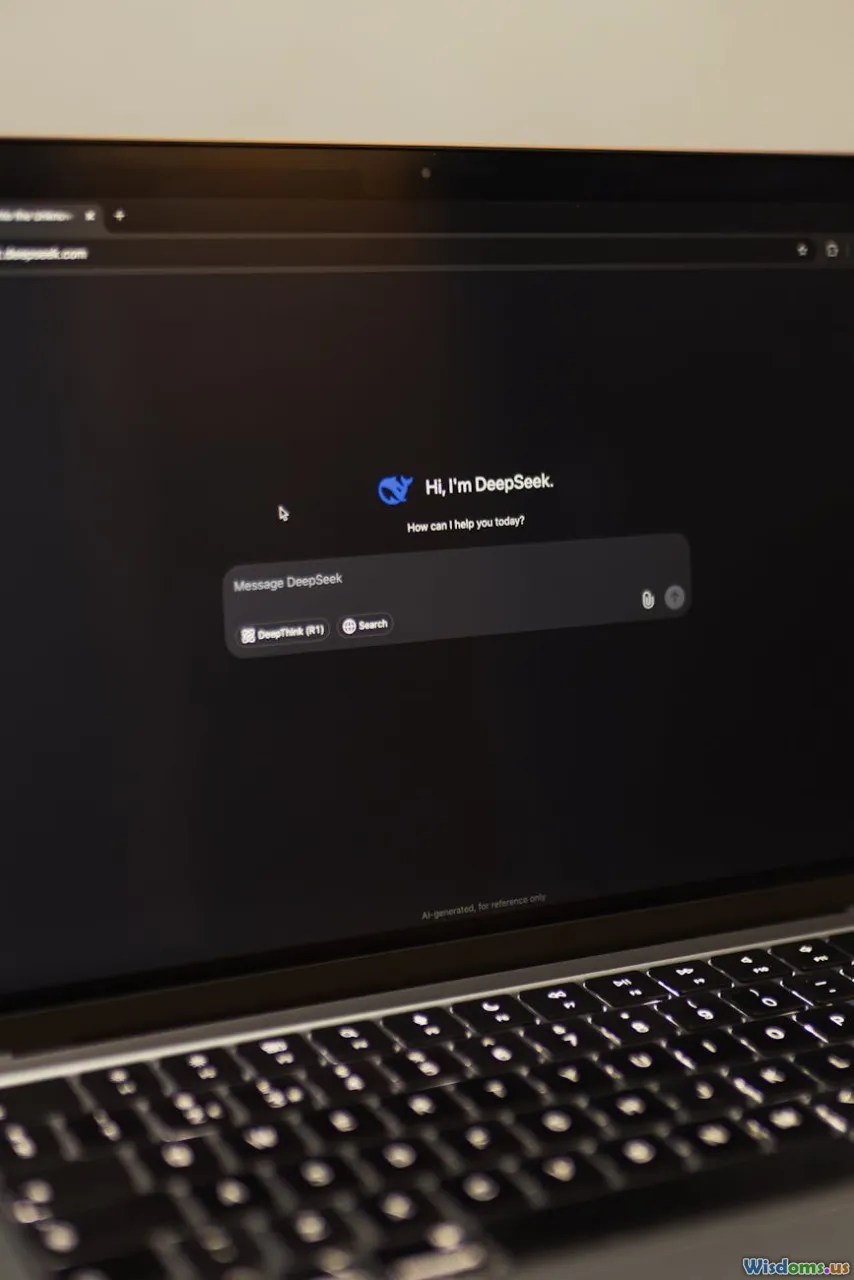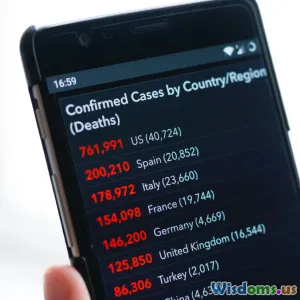
Are Modern Crackmes Too Easy for Beginners
16 min read Examines whether modern crackmes provide the appropriate level of challenge for beginners learning reverse engineering. (0 Reviews)
Are Modern Crackmes Too Easy for Beginners?
Reverse engineering lies at the heart of cybersecurity, software analysis, and intellectual curiosity. "Crackmes"—tiny challenge programs designed for analysis and breaking—have long served as a rite of passage for aspiring reverse engineers. But there’s an ongoing debate: have modern crackmes become too easy for beginners to truly learn and grow?
The Origins and Evolution of Crackmes

"Crackme" emerged from a time when cracking commercial software protection schemes was both a popular hobby and an occasional act of defiance. In the early 2000s, pirate groups and online communities, like Reversing.be and Crackmes.de, began to separate educational and ethical reverse engineering puzzles (crackmes) from illegal piracy.
The earliest crackmes often mimicked real-world software protections: serial checks, encrypted configuration, or custom obfuscation. For aspiring analysts, these were not just puzzles—they mirrored actual skills used by security professionals or malware analysts. In those days,
- Crackmes were small but generalized; they sometimes used obscure tricks or assembler-only challenges.
- Solutions often required not just disassembling code but understanding outdated compiler nuances, manual stack unwinding, or esoteric anti-debugging tactics.
Over time, the crackme landscape transformed:
- Platform diversity grew; Windows led, but Linux, macOS, and even mobile platforms joined in.
- Tools improved: IDA Pro, OllyDbg, Ghidra, and x64dbg made static and dynamic analysis vastly more accessible.
- Crackmes split into tailored categories: beginner, intermediate, advanced, and themed (like crypto or anti-debug).
It's in this evolution that today’s easy-mode crackmes are often viewed as simplistic—and sometimes, critics claim, superficial.
What Makes a Crackme "Easy" or "Hard"?

To determine if a crackme is too easy, we should first dissect what difficulty means in this context:
Typical Characteristics of Easy Crackmes:
- Obvious Routine: License or flag check is a simple string comparison.
- Predictable Control Flow: No obfuscation, straight-line code, few if any anti-debug protections.
- Use of High-Level Languages: Sometimes, challenges are written in Python or C# with minimal compilation or obfuscation.
- Minimal Platform/Tool-Specific Hurdles: Designed for IDA, Ghidra, or even source-level analysis.
Hard Crackmes Tend to Include:
- Cryptographic Algorithms: Custom or standard (e.g., RSA, TEA) that require analysis or math skills.
- Heavy Obfuscation: Techniques like code virtualization, instruction substitution, opaque predicates.
- Anti-Debugging/Anti-VM: Use of environment checks, timing attacks, debugger detection.
- Self-Modifying Code or Packing: The binary unpacks or morphs itself at runtime, foiling naïve static analysis.
A vivid example is the "reverse me" group on Crackmes.one: beginner tags are often attached to small challenges where a correct flag can be quickly found—sometimes in under an hour—for someone with basic static analysis experience.
Are Modern Beginner Crackmes Really Easier?

Empirical evidence suggests that today’s easiest crackmes tend to be simpler than many of their early-2000s predecessors. Here are some reasons—and caveats:
Community Design Choices
Many sites now encourage setters to explicitly mark and design for beginner skills. For example:
- Crackmes.one, as of 2024, often hosts daily challenges where the correct methodology rarely extends beyond recognizing a string comparison in ghidra or debugging through the call stack.
- The use of anti-debugging, packing, or any native assembly-level challenge is mostly reserved for intermediate or advanced categories.
The rationale:
- Onboarding: The aim is to attract total beginners—often those with no exposure to binary formats, CPU architecture, or debuggers.
- Friendly Feedback: New users can post write-ups, seek hints, and gain confidence quickly—raising overall participation.
Technical Accessibility & Tools
Modern tools like IDA Pro Community Edition, Cutter (GUI for Radare2), and Ghidra remove many manual tasks:
- Ghidra or x64dbg can track cross-references, decompile, and automate tedious code flow exploration.
- In the past, navigating naked assembly was a requirement; now, helpful decompilation makes beginner crackmes (which may not even obscure API usage) solvable in minutes.
Lowered Skill Floor: Double-Edged Sword?
Anecdotally, "easy" crackmes often double as introductions to tools, not just to reversing itself:
- Students can extract solutions without internalizing concepts, learning just enough to satisfy their curiosity—not mastery.
- Some write-ups posted today offer a handful of annotated screenshots and little theory, where once exhaustive commentary was the norm.
However, this isn’t necessarily a negative. Research shows a low initial barrier can significantly increase total engagement and encouragement to tackle harder challenges. Hack The Box observed similar patterns in their beginner "machines."
The Value and Limitations of "Too Easy" Challenges

So, are easy crackmes inherently bad?
Value-Adds of Simplified Puzzles:
- Accessibility: More people, including those outside software development or security research, learn the basics and enter the field.
- Rapid Feedback: Quick wins promote confidence—a crucial factor in self-guided technical learning.
- Tool Familiarization: Many beginners simply want to learn IDA or Ghidra navigation initially.
Limitations:
- Superficial Learning: If a beginner does only these and never moves to harder problems, their fundamental reverse engineering skills may remain shallow.
- False Sense of Security: Solving a half-dozen “easy” samples does not necessarily translate to robust competencies against crafted malware or commercial obfuscation.
Community Solutions: Groups such as the Open CrackMe Initiative (OCI) or local cyber capture-the-flag clubs frequently pair "friendly" easy-mode crackmes with tutorial write-ups, nudging solvers toward conceptual depth. For example, after an easy win, a mentor may ask, “What if this binary used dynamic calls via function pointers?”—thus prompting further study.
Producing a Useful Learning Curve: The Role of Challenge Designers

For beginner crackmes to serve their purpose beyond a confidence boost, challenge designers carry special responsibilities. Here’s how quality beginner crackmes can scaffold real learning:
1. Teach Through Structure, Not Obscurity
A well-designed beginner crackme might include:
- Simple Serial Check: But with layered logic (e.g., reversed input, basic bit-masking). Example: requiring the solver to notice ASCII arithmetic, not just static string matching.
- Small Anti-Debug Trick: Such as using an easily-rooted IsDebuggerPresent() call, prompting exploration of process memory.
- Short but Non-Trivial Control Flow: Encouraging use of cross-references, breakpoints, and decompilation—not just literal searching for “flag”.
2. Provide Optional Hints and Gentle Ramps
Great learning-oriented crackmes now come with structured hints:
- Optional step-by-step “nudges”, sometimes released after a certain fail count or elapsed time, encourage problem-solving without immediate hand-holding.
- Example: “Notice anything suspicious about that XOR operation before the serial check? Try following the registers in your debugger.”
3. Encourage Write-ups and Community Discussion
Crackme ecosystems thrive when users reflect on their solutions. Many modern sites:
- Reward detailed write-ups (explaining both intent and execution).
- Host forums for challenging misunderstandings such as value obfuscation or API misuse.
4. Tiered Challenge Sets
Influential contest runners, like those at the Reversing Challenges initiative or CTFd events, structure crackmes as learning trees. Upon solving an “easy” starter, solvers unlock slightly tougher, conceptually related variants that reuse familiar tricks in new ways.
Case Studies: Modern Crackmes and Their Impact

Case Study 1: Crackmes.one Daily Beginner Series
- Typical example: A simple Windows PE file asks the user to find the correct password.
- The main function:
if(strcmp(input, "cr@ckMe!2024")) { fail(); } else { win(); } - Even for first-timers, steps are straightforward: decompile, search for string literals, set a breakpoint, run.
- Average solve time: <30 minutes.
- Learning outcome: Great intro to setting up tools; limited concept depth.
Case Study 2: p4wn’s Mini Anti-Debug Crackme
- Presents as a basic challenge, but includes a short call to CheckRemoteDebuggerPresent.
- Intended for beginners, yet savvier solvers must patch conditional logic or attach their debugger stealthily.
- Average solve time: 1–2 hours, more for complete novices.
- Learning outcome: Beginners make their first step into process environment checks and function patching. Slightly higher learning curve.
Case Study 3: International CTF Beginner JailChallenges
- Cross-platform, increasingly popular in university CTFs (e.g., picoCTF).
- Simulate real-world login routines but, by providing partial source or hints, ensure accessibility.
- Some tasks require guessing or brute-forcing, but others cleverly foster analysis through approachable logic flaws.
From these cases, a pattern emerges: most modern "easy" crackmes work as motivational seeds. Yet, those that inject even a dab of anti-debug code or arithmetic logic force learners to use their tools more deeply.
Striking the Right Balance: How Not to Over-Optimize for Ease

When is a crackme too easy? Ultimately, when it expects less than
- observing code paths,
- reading assembly or high-level pseudo-code,
- applying core tool functions (e.g., breakpoints, memory inspection), or
- thinking through logic transforms.
Tips for Designers Looking to Raise the Floor Without Destroying Approachability:
- Flavorful Chaff, Not Annoyance: Add a quick check—like base64 encoding—before the password validation routine. Include at least one superficial dead path to promote basic static analysis.
- Incremental Anti-Debugging: Even a single IsDebuggerPresent or GetTickCount timing can expand a learner's understanding.
- Encourage Research: Drop function names or symbols hinting at undocumented or homebrew logic. Let solvers Google, fostering natural R&D skills.
- Prompt Exploration Beyond the Challenge: Suggest a "bonus" mode. Example: "Patch the crackme to accept any input!"
- Refuse Over-Reliance on Decompiler Output: Adapt input checks so they appear simple decompiled but actually contain a subtle logical flaw, requiring stepping through in a debugger.
Ultimately, for modern crackmes to serve both new and growing reverse engineers, they shouldn’t just be winnable—they should stimulate learning, even for the absolute beginner.
Why The "Easy Mode" Debate Won't Go Away—And Why That's Good

As reverse engineering becomes a more accepted and accessible skill, the meaning of a "beginner crackme" changes. In 2010, something an undergraduate found intuitive might have bewildered a total layperson. Today, access to online resources, tool documentation, and teaching platforms has grown—so too has the entry-level knowledge pool.
Critics of super-simple crackmes observe a real risk: puzzles that reward tool automation over human insight. Yet, as history and evidence show, a vibrant learning community depends on both easy onramps and a steady supply of harder puzzles. The best beginner crackmes don't patronize; they offer challenge just above comfort level—prompting effort, not mere clicking.
Ultimately, whether you're an educator, a hobbyist, or a cybersecurity aspirant, remember: "easy" is relative. What's trivial for a seasoned practitioner may be truly mind-bending for the next generation of talent. What matters is not just how quickly a crackme can be beaten, but whether it inspires deeper exploration—the real art in reversing.
Rate the Post
User Reviews
Popular Posts















